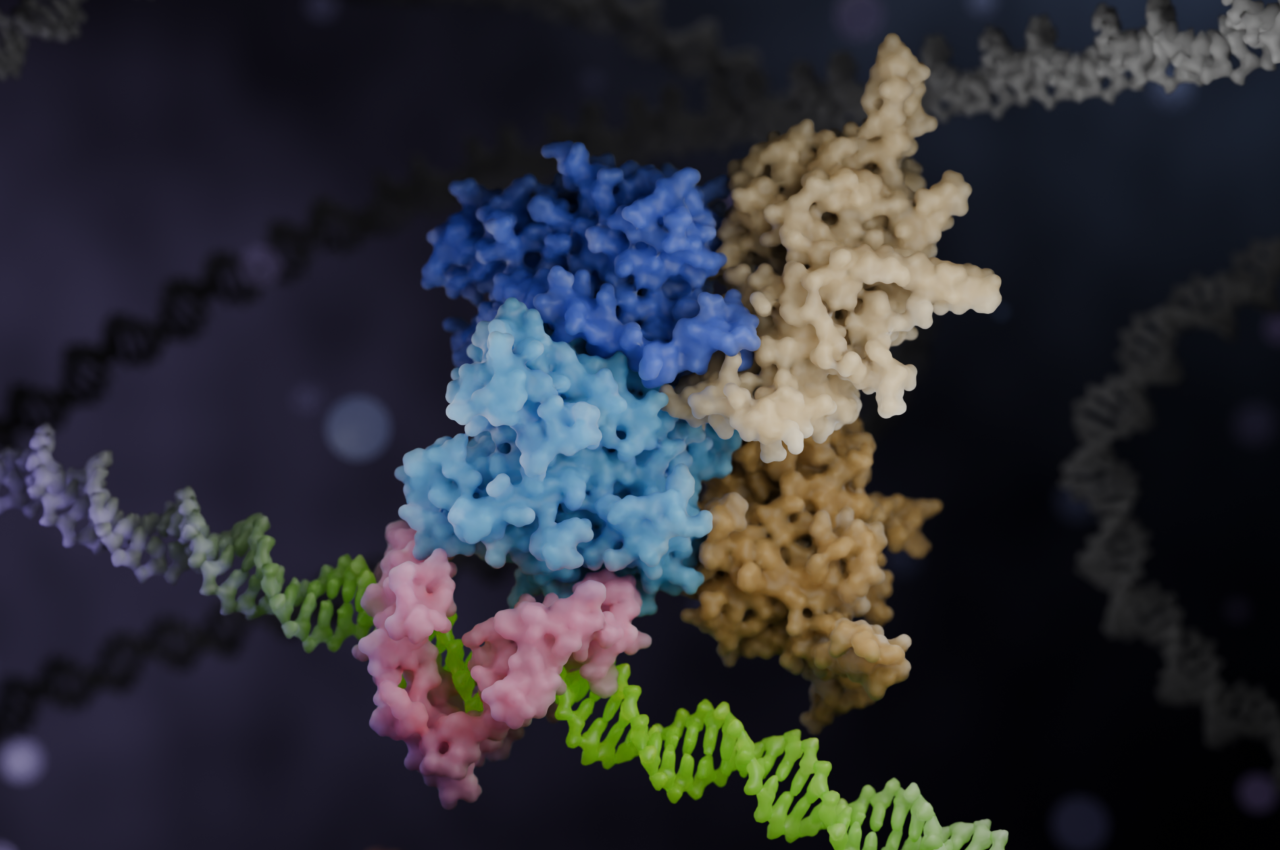A new collaborative study from the labs of Oncode Investigators reveals a previously unknown pair of proteins that play a vital role in how cells read their genetic code.
Each cell in our body contains the same DNA, yet they behave in remarkably different ways. That’s because only certain parts of the DNA are active in each type of cell. This selective activation is controlled by molecular switches that guide gene expression — much like a conductor directing a musical performance. These switches help orchestrate a cell’s behavior, determining whether it becomes, for example, a skin cell, a muscle cell, or a neuron.
Uncovering a new layer of gene regulation
The research led by Oncode Investigators Anastassis Perrakis and Thijn Brummelkamp has now revealed a new mechanism that strengthens the action of these DNA switches. During their investigation, Oncode Researcher Danielle Bianchi and colleagues identified Zincore: a pair of proteins that enable gene-regulating proteins to anchor more securely to DNA.
“Zincore supports a large class of DNA-binding regulators known as zinc finger proteins,” Bianchi explains. “What makes it unique is that it uses an entirely new method to stabilize these interactions - something we hadn’t seen before.”
A link to cancer and rare developmental disorders
The discovery also points to important medical implications. The researchers observed that in cancer cells, Zincore’s target switches often don’t function properly. Additionally, mutations in the genes that code for Zincore are found in people with certain rare genetic conditions, including Ververi-Brady syndrome - a disorder characterized by abnormal development.
This suggests that Zincore plays a broader role in maintaining healthy cellular function, and its malfunction may contribute to both inherited disease and cancer progression.

© Razvan Borza / NKI / Structure of the Zincore (SEPHS1:QRICH1) bound to the zinc finger protein ZFP91 on DNA (PDB: 9HJT). The image highlights the locking mechanism by which Zincore stabilizes ZFP91 on DNA enabling gene activation. Rendered in Blender.
© Razvan Borza / NKI / Structure of the Zincore (SEPHS1:QRICH1) bound to the zinc finger protein ZFP91 on DNA (PDB: 9HJT). The image highlights the locking mechanism by which Zincore stabilizes ZFP91 on DNA enabling gene activation. Rendered in Blender.
A collaborative effort built on persistence
Making the discovery was far from straightforward. “We hit a lot of roadblocks along the way,” says Bianchi. “But through persistence and close collaboration across multiple disciplines, we were able to piece it all together.”
The turning point came when insights from different research teams aligned. “It was an incredible moment,” Bianchi reflects. “We realized we had uncovered a key part of how cells control gene expression. Zincore appears to be a central player in this process, and we now want to understand how external cues may influence its activity - and, by extension, how cells behave.”
The study was supported by the Dutch Cancer Society (KWF) and the AVL Foundation.